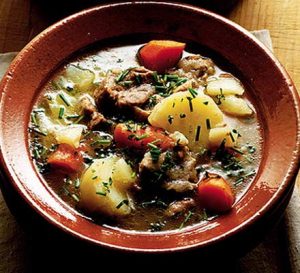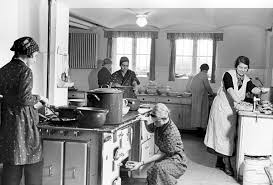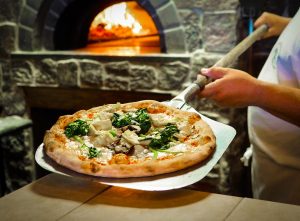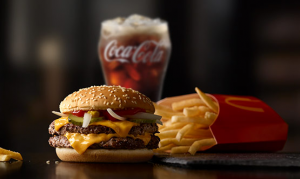Immigration & United States Food Culture

Koger, Grove. “Foodways.” Immigration to the United States. N.p., 2015. Web. 27 Feb 2017. http://immigrationtounitedstates.org/504-foodways.html
In this text, Grove Koger introduces the idea that U.S. food culture has been affected by foodways. Foodways are foods preferred by immigrants, as well as the culture behind producing, cooking, or consuming them. Because of his status as an awarded librarian, Koger is able to incorporate information from a variety of different races and ethnic backgrounds. However, Koger seems to focus on European immigrants to America, most likely because he is of European descent himself. Through his article, he memorializes the foodways of many different immigrant groups to tie them to the common American today. This text serves as a basis to my topic, explaining the different food cultures of many popular immigrant groups of the United States. While other texts are more specific to a certain immigrant group, this text manages to be a broad overview of the entire topic, celebrating each individual culture as it is introduced and discussed.
Muturi, Jason. “8 Traditional Irish Dishes That Will Remind Every Irish American of Home.” Xpatnation. Jason Muturi, 17 Nov. 2015. Web. 27 Feb. 2017. < http://xpatnation.com/traditional-irish-dishes-that-will-remind-every-irish-american-of-home/>
 In his article, Jason Muturi shows several popular Irish dishes, discusses their origins, and gives general insight on how and when these dishes could be used. Since he is just a journalist of Irish descent, Muturi writes this article not for accuracy, but to celebrate the Irish food culture in America. Many of the dishes discuss popular American versions of the recipes, such as using beef to make an Irish stew instead of lamb. This text presents a great example of how generations in America can slightly change recipes to fit the needs of Americans over time, while still honoring the historic culture of the food.
In his article, Jason Muturi shows several popular Irish dishes, discusses their origins, and gives general insight on how and when these dishes could be used. Since he is just a journalist of Irish descent, Muturi writes this article not for accuracy, but to celebrate the Irish food culture in America. Many of the dishes discuss popular American versions of the recipes, such as using beef to make an Irish stew instead of lamb. This text presents a great example of how generations in America can slightly change recipes to fit the needs of Americans over time, while still honoring the historic culture of the food.
Nathan, Joan. “Food in the United States.” Jewish Women: A Comprehensive Historical Encyclopedia. 1 March 2009. Jewish Women’s Archive. (Viewed on February 27, 2017) <https://jwa.org/encyclopedia/article/food-in-united-states>.

In this article, Joan Nathan discusses the history of the American Jewish woman in terms of the kosher food industry. Being a Jewish woman herself, Nathan clearly caters to her own demographic, yet the tone of this piece is very professional and historical. She discusses not only the immigrant woman who started the industry, but also what the selling and marketing of kosher foods has become, even stating how it has spread beyond just Jewish people. This article goes very in depth into the history and culture of these Jewish women, and although it is one of the more biased sources pesented, it is also one of the most in depth. Nathan not only discusses the culture of the food, but also the extended effects across the United States and the global industry for kosher foods.
Shanker, Deena. “25 Classic Jewish Foods Everyone Should Learn To Cook.” BuzzFeed. BuzzFeed Inc, 26 Oct. 2014. Web. 27 Feb. 2017. < https://www.buzzfeed.com/deenashanker/make-bubbe-proud?utm_term=.vbLpKGXpX#.klYrvdnrn>

This text is a simple article for BuzzFeed, and does not contain much historical value. However, this is an excellent article to determine traditional Jewish foods and how to make them. Deena Shanker effectively links recipes for each of these 25 dishes, allowing the general audience to participate in cooking these foods. Shanker is a journalist for BuzzFeed and therefore only called upon personal experience to write this article; she does this in an attempt to be connected to a larger, less detail oriented audience. This text provides information for how to make these different, important, cultural foods as well as some light-hearted analysis of the dishes. BuzzFeed is a prominent source of entertainment for many Americans, and this article clearly depicts how immigrant foodways are directly making their way into overall American culture.
Perner, Lars. “Food Marketing, Consumption, and Manufacturing.” Thesis. University of Southern California, 2008. Food Marketing. Lars Perner, 2008. Web. 1 Mar. 2017. < http://www.consumerpsychologist.com/food_marketing.html>
Lars Perner is an assistant professor of clinical marketing at the Marshall School of Business at USC. In this extensive text, he discusses the theories behind food marketing across the globe. The purpose on this text is to explore insightful theories in terms of food marketing and consumptions to maximize manufacturing levels so that not only is there no shortage of popular foods, but also no surplus of unpopular foods. This thesis is highly technical and includes incredibly detailed analysis of this topic. The other texts take a much simpler approach, whereas in this text, Perner deeply analyzes the global trends that dictate the varying popularity of different foods from cultures all across the globe.
Mariani, John F. How Italian Food Conquered the World. New York: Palgrave Macmillan, 2012. Print

In his book, How Italian Food Conquered the World, John Mariani discusses the process of how pizza became immensely popular; specifically, how the marketing of pizza as a fast food led to a huge increase in demand for pizza in the United States. John Mariani is a decorated food author and journalist who has many books discussing Italian food, American food culture, and fast food. This shows directly how American’s commercialized an original Italian recipe. The text discusses the history of the first Italian pizzerias opening in New York City, and how from the small immigrant run places, it expanded into a huge world-wide business.
“Immigrants Eat American Junk Food to Fit In: Study.” U.S. News & World Report. U.S. News & World Report, 06 May 2011. Web. 27 Feb. 2017. < http://health.usnews.com/health-news/diet-fitness/articles/2011/05/06/immigrants-eat-american-junk-food-to-fit-in-study>

This article discusses how immigrants choose to eat fast food once coming to America simply to fit in. Although many immigrants choose to stay true to their culture, some choose to attempt to fit in with Americans by choosing fast food. This is a statement of how American food culture is perceived. Although this article does not have an explicitly named author, it focuses on the immigration of Asian-Americans over any other immigrant groups. This study illustrates how alienated our food culture still remains even to this day from the food cultures across the world. The author of this article was trying not only to discuss the poor consuming habits of Americans, but to show how easy it is to spread these negative habits to immigrants who are willing to change in order to be accepted.
Choi, Amy S. “What Americans Can Learn from Other Food Cultures.” Ideas.ted.com. TED Conferences, 03 Jan. 2016. Web. 27 Feb. 2017. < http://ideas.ted.com/what-americans-can-learn-from-other-food-cultures/>

Amy Choi expresses an interest in advocating for a more culturally diverse food culture in America. As a woman who is married to a man of mixed ethnic backgrounds that do not overlap with her own, she sees herself as a global citizen with deep knowledge of other cultures. She describes American food culture as very fast and efficient, while other cultures cherish and savor mealtime as an important ritual. She advocates for this shift to create a food culture in America that is celebrated for its quality and not just for its efficiency. This article is written to be read by the public of America in the hopes that they will begin to think differently about the food culture that they portray. Choi explains how American food culture has implored some changes based on immigrants, but has not taken certain key aspects. Although this article gives less specific facts, it gives many theories and ideas about food culture in America and across the world.
Interesting choice of topic. I liked the article that talked about immigrants eating fast food in order to fit in. I also enjoyed the text about the various Irish dishes.
I really liked the topic of immigrants and how it shapes the food we have. The buzzfeed article was really cool. I have actually made some of those recipes and it’s really good.
nice post,thanks for sharing. lovely suggestions followed with photos. Immigrants do shape the overall culture of each country, a bit.
Nice to see a a few sentences about the Irish food culture and celebrations in America. All Irish have their food even when living abroad, some more that others. There is a few famous Irish dishes, you get the real taste of when in Ireland, but most of all is Irish breakfast, that the country is known for in the world. And who could say “no” to full Irish breakfast. A super source of energy to charge you for the day.